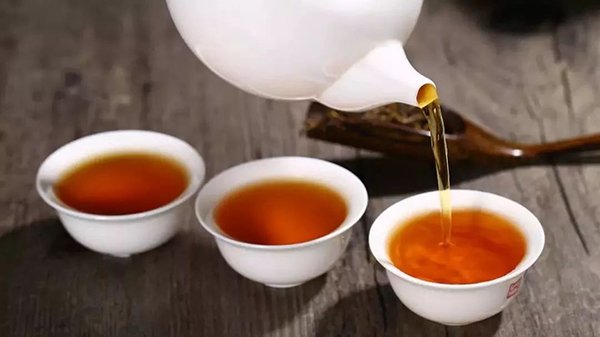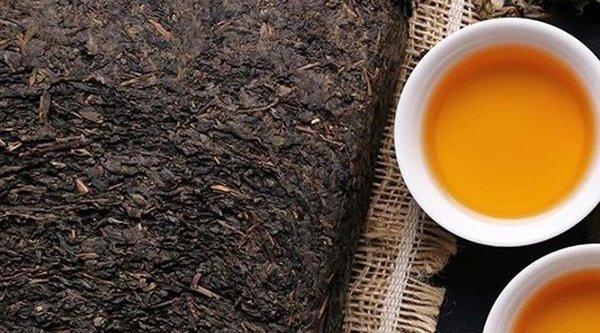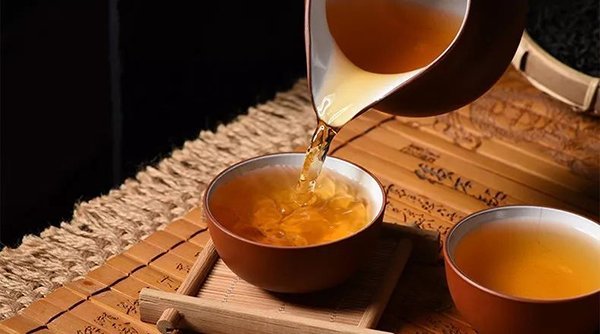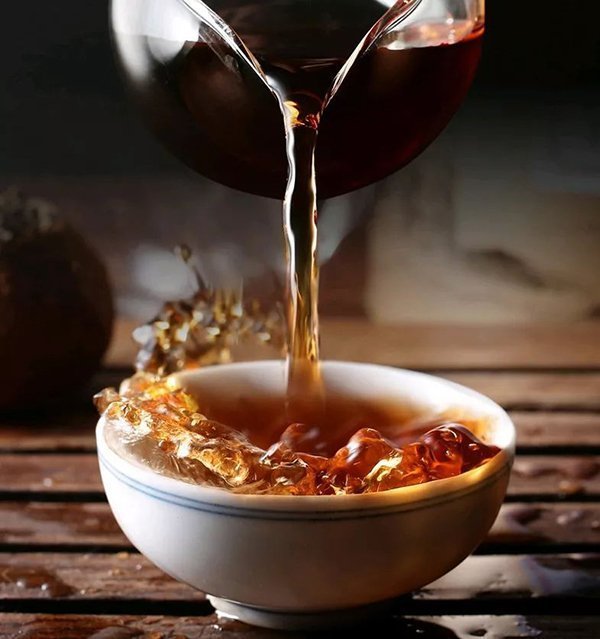Last Updated on 01/06/2021 by Desmond
Dark tea belongs to post-fermented tea; what we know most the Pu-erh tea is one of them. Unlike other tea types, dark tea got a very long expiration date, or you can say the longer it is stored, the greater value it gets; we called it aging. Tea factories and merchants usually let dark teas aging for certain before selling. And the aging job will effects the dark tea flavor a lot, so it’s a challenge to identify dark tea quality.
Senior tea lovers typically identifying dark tea quality according to the following aspects.

CONTENT
Appearance
Dark teas mostly sell in a compressed tea style; a few like Tian Jian Cha sells in a loose-leaf way. No matter tea bricks or loose teas, the points on quality identity are similar.
First, we should take a look at the leaves’ integrity. Dark tea is almost made from the old rough leaves, blended with some tea stems, which have a high tenacity. But in the processing of compress to brick, the leaves may get broken—especially the Zang Cha and Qian Liang Cha, which are compressed in a pestling way.
To some famous brands, tea masters pay super attention to the appearance details. To check
- Whether the tea brick edge and shape is flat;
- Are there many tea crushes inside the package;
- Are there any crack on the brick surface;
All these things can tell us the attitude when tea masters on the job, also an intuitive reflect on the dark tea quality.
To the loose-leaf like Tian Jian Cha, you need to see whether every leaf’s length is roughly the same. If not, that means they may not come from the same batch or similar grade source leaves. Besides, see the leaves, whether it is tighter, and tea crushed is many.
Second, to look at the leaves’ color. Most high-quality dark tea leaves are black and glossy; Fuzhuan tea is an exception, it’s dark yellow. Of course, leaves without glossy don’t mean bad quality; the basic requirement is to be uniform.

Aroma
4 primary factors affect the dark tea aroma
- In piling processing, the interaction between microorganisms and leaves created a unique scent, such as the Liu Bao Tea‘s betelnut aroma;
- The fragrance from the roasting process, like pine and smoky;
- During the aging, the conversion of leaves internal ingredients, and the flavor change and improve from the various microbial actions;
- Affected by the improper aging environment, the aroma polluted or go bad;

Fresh dark tea often has a so-called “piling smell.” That is why most tea factories will aging them for a time before sales. Besides, different processing and blending ways also make dark tea a distinct aroma, which the tea masters always work on.
When the dark tea is young, they all get their own unique aromas, such as Liu Bao tea’s betelnut and Fuzhuan brick’s golden flower aroma. After a long time of aging, the dark tea aroma will get a noticeable change, and it also depends on how much the time cost. The most common is the ripe grain scent, which is the so-called “aging aroma.” Fruity and floral also usual. And some tea lovers said after dozens of years of aging, some dark tea will develop a medicine-like aroma.
Tea Infusion Color
The criteria for tea infusion quality is simple; you just need to see whether it is as clear as crystal. If the infusion is muddy, that means bad quality. The fresh dark tea infusion is a little light orange, and the aged dark tea will show an amber or dark-red color.

Flavor
How it tastes is what a tea lover most cares about. To find the fittest taste is all the tea lovers pursuit. Even though everyone got a different preference, we still have some standards to identify dark tea flavors.
Mouthfeel
The most significant characteristic of dark tea is the mouthfeel is much different from other tea types. After a long time of aging, the tea polyphenol in leaves will change. The astringency will get lost gradually and replaced by a fresh feeling, with a little sticky. Besides, dark tea also smooth; you can clearly feel the infusion sip down from your throat to your stomach.
Personally, I really like gulping ripe Pu-erh. I like this mouthfeel, just like to massage to the whole oral, it’s very moisture. Although dark tea can quench one’s thirst well, you still can not wait for the next cup.
But to some low-quality dark teas, no matter how long they have been aging, it still got an astringent taste. They won’t let you feel comfortable, but a depressing feel.
Taste
There is a small gap in taste between different dark teas; they are primarily affected by the aroma. Except for the flavor created by the aroma, high-quality dark tea basically has not bitter and astringency taste, and with a little sweetness and mellowness. This sweetness is from the tea polysaccharide, which increased during aging. The longer time the dark tea store, the sweeter it will be.
Feeling After Drinking
Senior tea lovers super care about the feeling after drinking tea; a simple saying is whether to feel satisfied. After finishing a pot of good dark tea, the oral feel moist and no more thirst, and the stomach feels warm. Besides, the dark tea’s unique aging aroma and sweetness will stay in your mouth for a long time.
The Leaves After Brewed
To observe the leaves after brewed is what the tea assessors often do to identify the dark tea quality. After brewing, the leaves will thoroughly spread apart and return to their real features. See whether they are integrity and the color is uniform. Typically due to post-fermenting, dark tea leaves after brewed will show a dark-brown color.
Besides, due to the aging needs, dark tea often with some tea stems, but they will not be too many. If you found there are too many tea stems after brewing, that may mean the tea is low-quality. The good stems usually show dark-red or dark brown, and the old ones will be deep-dark and no glossy.